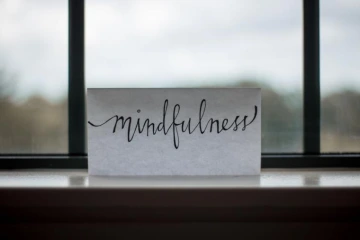This page is made with card decks. When you want to add a new row of cards, click edit and scroll all the way to the bottom and click the Add Card Deck Button. Then, only use the SUMMARY box. Do not use any other field.
ONE | You can embed a file by clicking the F File button above

THREE | highlight work. click on link button above. and then change the link style to button hollow primary
Topic
Creating Community in Online Classes

Description
Building a sense of community is a key component of student success in online learning environments (Glazier, 2016). Community building can happen throughout the semester, not just at the beginning, through the use of
- personalized feedback, (Gallien & Oomen-Early, 2008),
- posting comments on discussion boards and mentioning students by name (Brinthaupt, et al., 2011), and
- sending personal emails to students throughout the semester (Glazier, 2016)
For 5 Tips on Creating Community in Online Classes, see the tip sheet.
Additional Resources
Self-regulated learners in online classrooms
Self-regulated learners in online classrooms

Self-regulation involves cognitive strategies, metacognitive strategies, and motivation (Bouffard, et al., 1995).
Self-regulation also involves one’s ability to guide their own behavior over time and varying circumstances (Cellar, et al., 2011).
Students with higher levels of self-regulatory behavior tend to also have higher levels of academic performance because they are aware of the strategies they need to use, are able to use them, and then are able to evaluate their performance and make changes as necessary (Bouffard, et al., 1995).
For more information on how to create self-regulated learners in your online classes, see the tip sheet below.
Resources
Fostering Metacognition in the Online Classroom
Metacognition has been defined as the combination of consciousness of goals and strategies and taking action when needed to reach goals (Coutinho, 2007; Malpass, O'Neil, & Hocevar, 1999; Young & Fry, 2008).
Research demonstrates that metacognitive use improves academic outcomes; however, knowing about effective learning strategies does not mean that students will use them (Zimmerman, Bandura, & Martinez-Pons, 1992).
Ask students to consider specific items throughout the unit or lesson. See the tip sheet below for more information
[insert fostering metacognition in the online classroom link here]
Extra Resources
Collaborative Learning in Online Classes
One way to approach collaborative learning in the online environment is through the Communities of Inquiry model (Garrison & Anderson, 2003; Redmond & Lock, 2006). The following tip guide and resources provide you with a way to integrate collaborative learning in your online courses. Several points are important to consider:
- Instructor presence is seen as a key component to facilitate effective online collaboration (Anderson, Liam, Garrison, & Archer, 2001).
- Students need the opportunity to bond and develop a community with each other and with you before they begin the work of collaboration (Janssen, Erkens, Kirschner, & Kanselaar, 2009).
Resources:
Coll, C., Rochera, M. J., & de Gispert, I. (2014). Supporting online collaborative learning in small groups: Teacher feedback on learning content, academic task and social participation. Computers & Education, 75, 53-64.
Garrison, D. R. (2011). E-learning in the 21st century: A framework for research and practice. Taylor & Francis.
Janssen, J., Erkens, G., Kirschner, P. A., & Kanselaar, G. (2009). Influence of group member familiarity on online collaborative learning. Computers in Human Behavior, 25(1), 161-170.
Redmond, P., & Lock, J. V. (2006). A flexible framework for online collaborative learning. The Internet and Higher Education, 9(4), 267-276.

